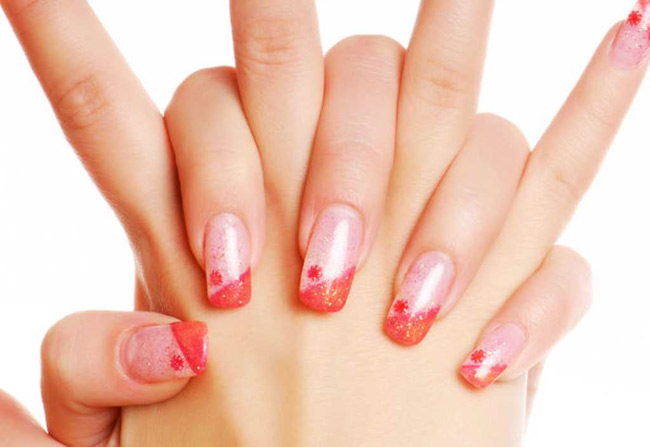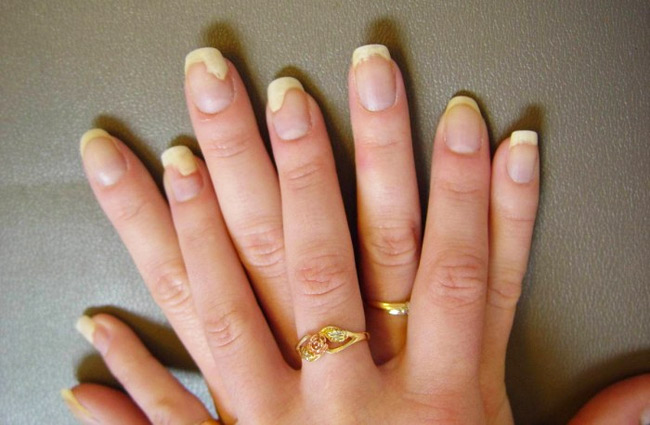Potential Hazards of Acrylic Nails

Acrylic nails are a combination of a liquid monomer and a powder polymer that creates a hard protective layer over your natural nails. The acrylic will gradually grow out with your nails, after nail growth. On your next visit for a redo, you are required to soak your nails in acetone for 10-15 minutes in order to fully remove.
Components of Acrylic Nail Colours
Although the FDA banned the chemical methyl methacrylate, or MMA,
in acrylic nail solutions, some nail salons still use it because of
poor regulation in the industry. MMA is known to cause respiratory
problems, eye and skin irritation and neurological issues.
Toluene, a toxic chemical found in some nail polishes and acrylic
nail glue, has been shown to cause respiratory issues, irritated
skin, headaches and dizziness. Prolonged or repeated exposure to
toluene may pose more severe health problems, including damage to
internal organs, such as the liver or kidneys.
Acetonitrile, found in artificial nail removers, can cause breathing
difficulties and skin irritation. Methacrylic acid, used in nail
primers, is generally considered safe in small doses but can cause a
number of health issues, mainly respiratory problems. However, many
people are sensitive to this chemical and may experience symptoms
immediately after contact, including
eye and
skin irritation. Prolonged exposure can also cause more severe
health problems, including damage to the kidneys and eyes.

Hazards
One should not be a fan of nail enhancements such as acrylics for
several reasons:
- Allergies to chemicals (resins and formaldehydes) in the product can cause nail separation, burning, pain or swelling. Not to mention, you may inhale significant and potentially harmful fumes if the salon isn't well-ventilated.
- Acrylic nails are traditionally stiff, without any give. Nails are meant to have flexibility. In case, the nail hit a hard object, it can more easily separate from the nail bed (onycholysis).
- Artificial nails may heighten risk of infection. Bacteria that is not completely removed from a nail plate prior to the application of an enhancement can lead to Pseudomonas (bacteria that produces a green pigment, hence the term 'greenies') to grow in the space between the nail plate and the enhancement. Also, damaged nails that have areas of separation can predispose a salon-goer to this issue.
Healthier Alternatives to Acrylic Nails
Take a break from polish and acrylics in order to achieve strong,
youthful nails.
When shopping for nail polishes that aren't loaded with harmful
chemicals, look for those that are are free of resins and
formaldehydes. You'll usually be able to spot them because the
product will boast something along the lines of "3-Free" or
"5-Free." That means that those polishes are free from known harmful
chemicals.
